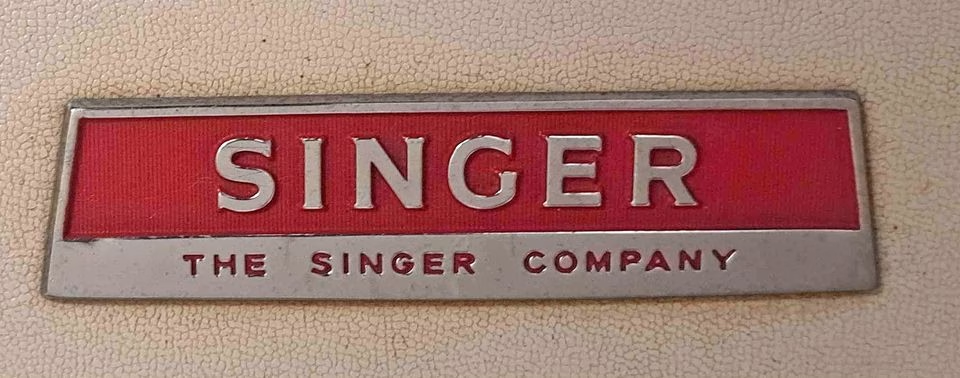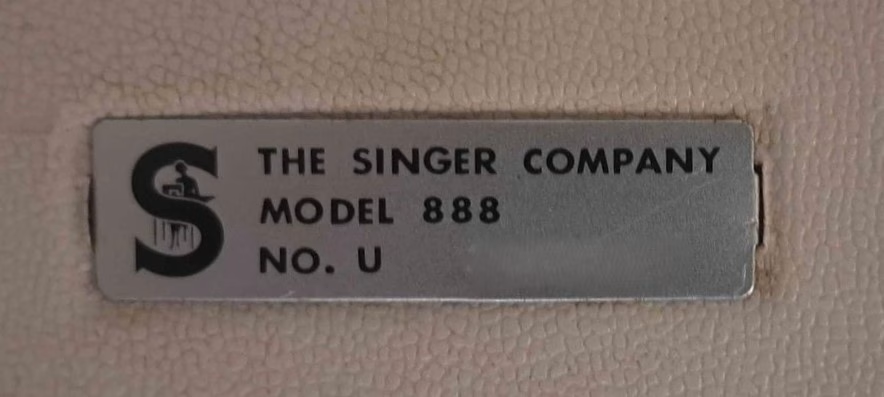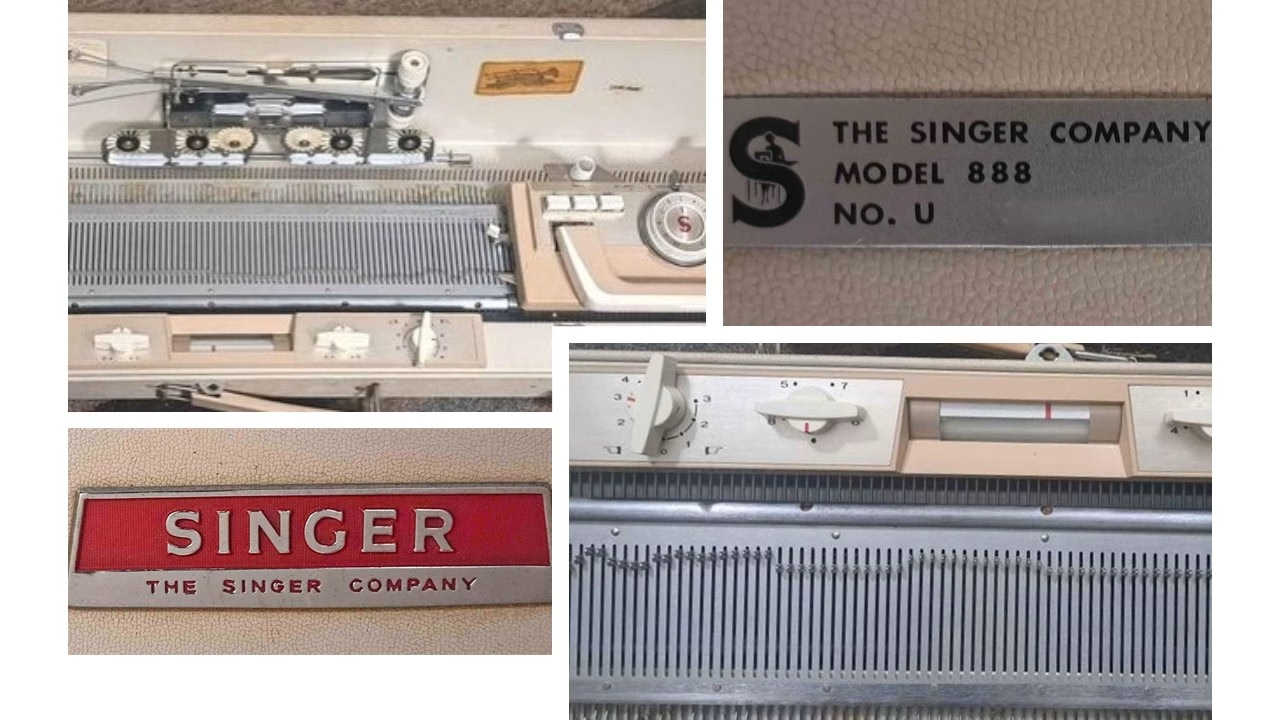Singer 888 knitting machine model has 200 needles, 4.5 mm apart, which makes it a standard-gauge knitting machine. It was released to the market in the mid-to-late 1960s. It has turn knobs, controlling needle selection and, thus, patterning when knitting.

I had a privilege to refurbish and service Singer 888; thus, I am, first-hands, familiar with its pros and cons and inner workings (check out the blog post dedicated to that machine). The very first thing I wanted to pass on: it felt strange to knit (and pattern) on this machine at first with so many different knob, lever and cam combinations but after I got a hang of it, I just fell in love. Check out an article I am writing on pros and cons of turn-knob machines in general (… coming soon).
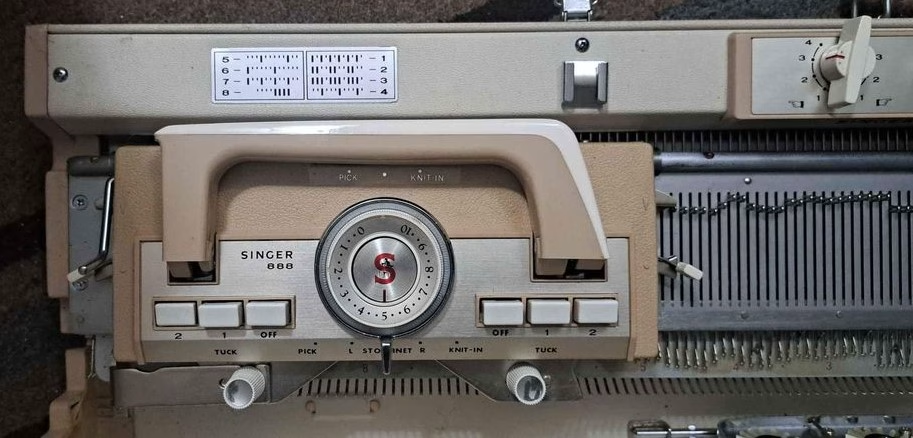
If you have troubles finding information on Singer 888, look for a more readily available info on (manual, instructions, patterns, etc.) on Knitmaster ES-302, Studio SK-302, and Silver SK-302 knitting machines as their are similar to Singer 888). Silver SK-301, Studio SK301, Silver 303, Silver 305 and Empisal Knitmaster mod. 305 are also similar turn-knob machines that will provide a lot of useful tips if instructions for the 302-series models is unavailable.
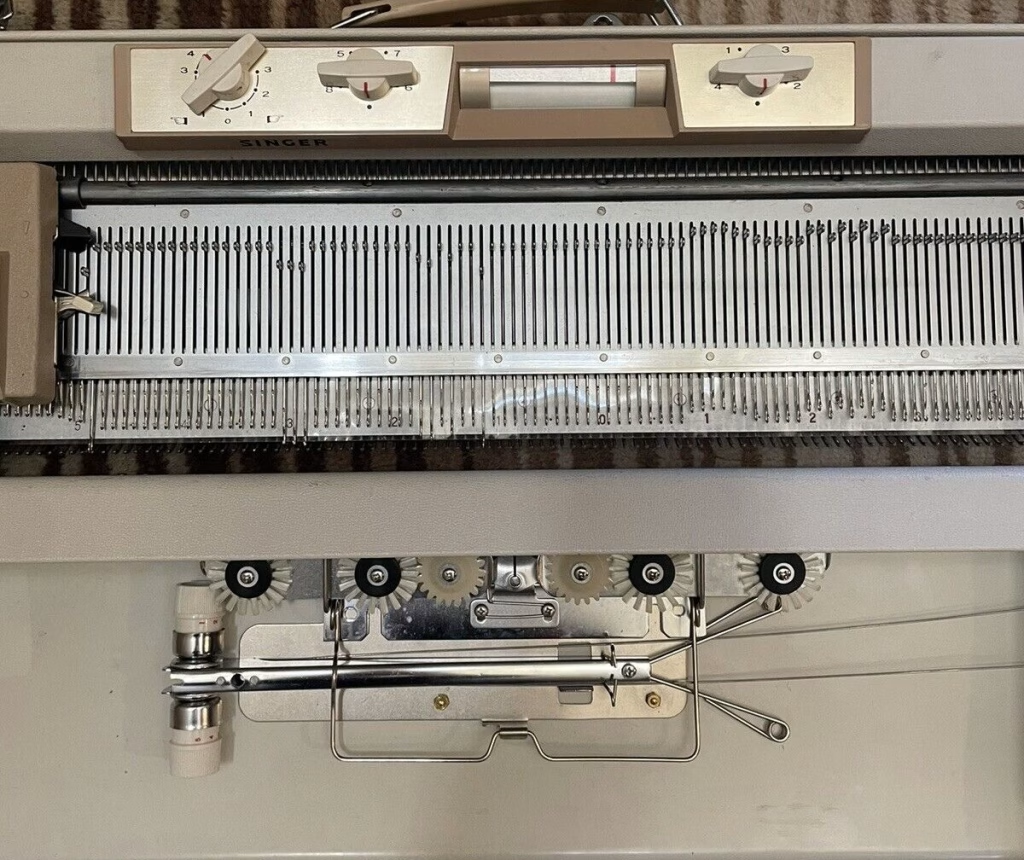
Disassembling and removing from the case was straighforward although requies different steps (especially on assembling/putting back into case) than its later punch-card counterparts. For example, to insert the end caps back onto the lower needle bed case, the needle bed needs to be removed from that bottom panel (just two screws on the bottom). Then attach the end caps, and then rest the needle bed onto the bottom part of the case with the plastic end caps already in place. Make sure you do not displace the square metal plates otherwise the scews wont securily attach to the panel and end caps.
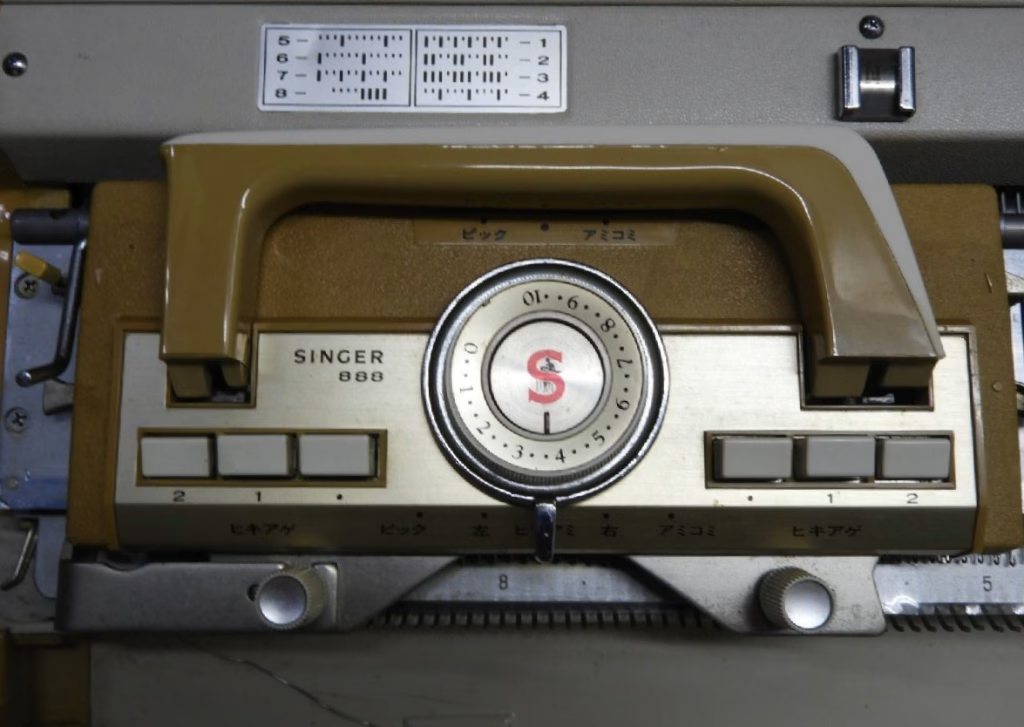
I liked how sturdy the end caps for this machine are. The later models have wider beds, thus, the end caps are a bit wider and longer and seem more hollow. Because of this they break often. Plastic end caps for Singer 888 (and other turnknob machines) are made from a very thick plastic and their minimum hollowness makes them very sturdy and less prone to breakage. Overall, their plastic martials seem (to touch and feel) less brittle than later, e.g., punchcard, models. Additionally the end caps are connected by all metal hardwire (unlike later models. It is easy to remove them to clean the machine. However, in order to put them back correctly, the metal panel has to be unscrewed from the needle bed first (but it is very straightforward).
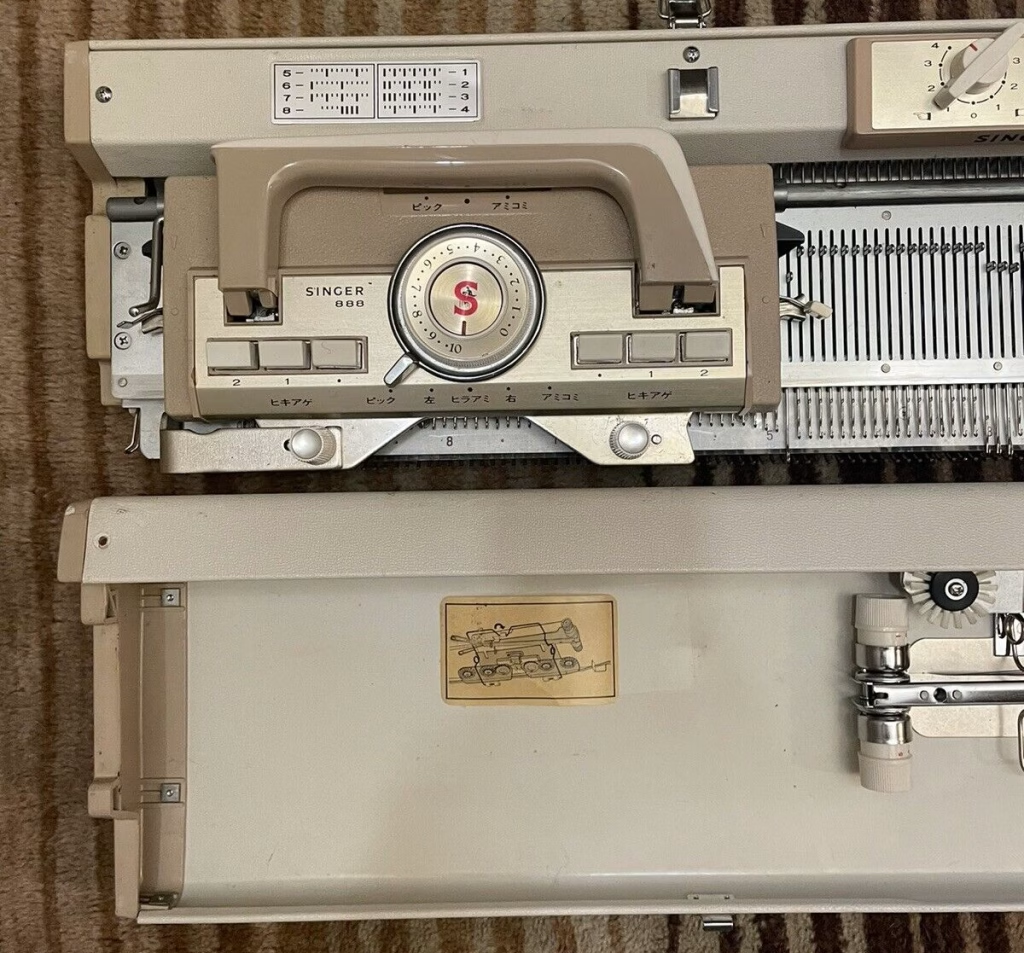
The carriage provides a lot of patterning capabilitities with all the knobs and levers. Notice an ergonomic shape of the carriage handle: a little nook on the left to grip the carraige easier
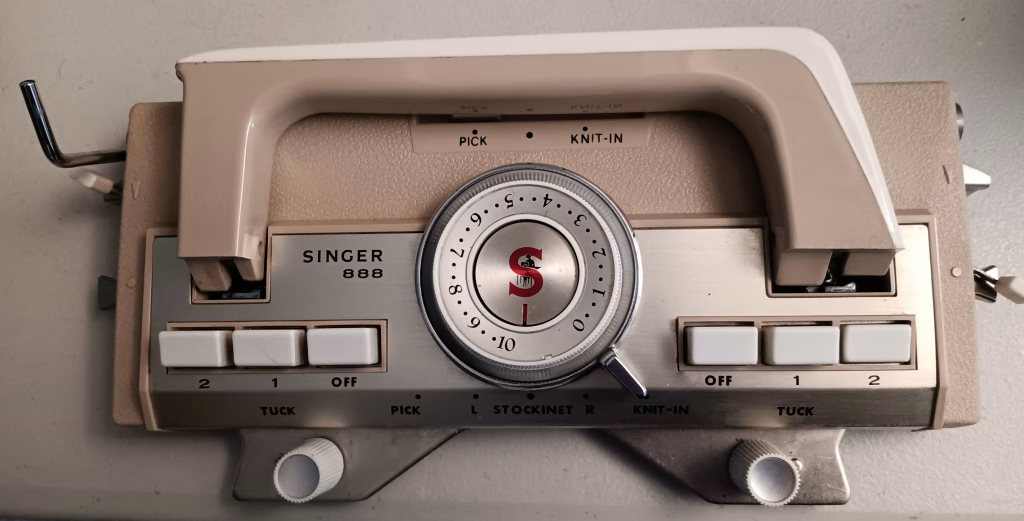
It has a less vintage design (the handle folds and the carriage itself selects the needles – which is typical for Singer/Silver Reed/Studio knitting machines, unlike Brother machines, where the needles are selected by the plates). However, some vitange features still remained: S-curved table clamps, clip-on round row counter.
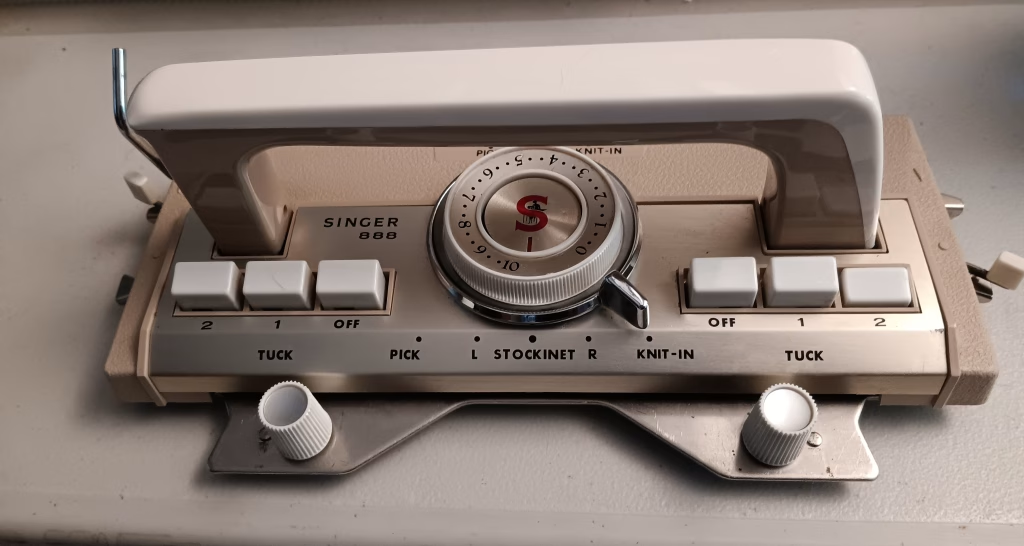
Yet, it is still simple and robust so it is easy to fix if there are problems.
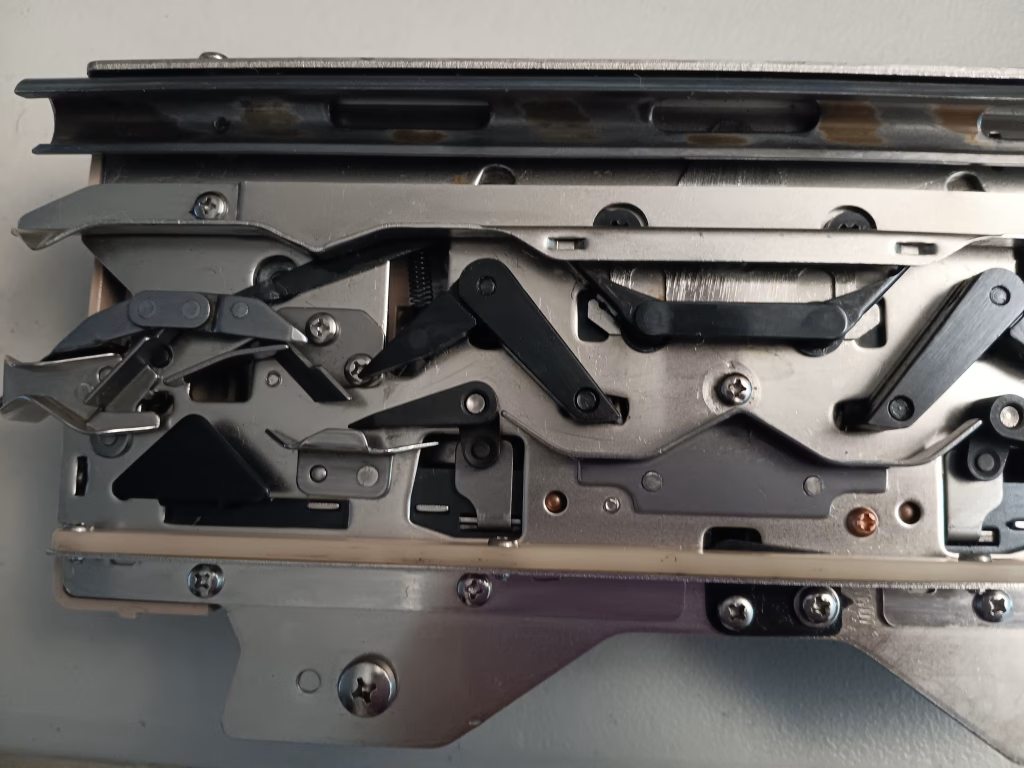
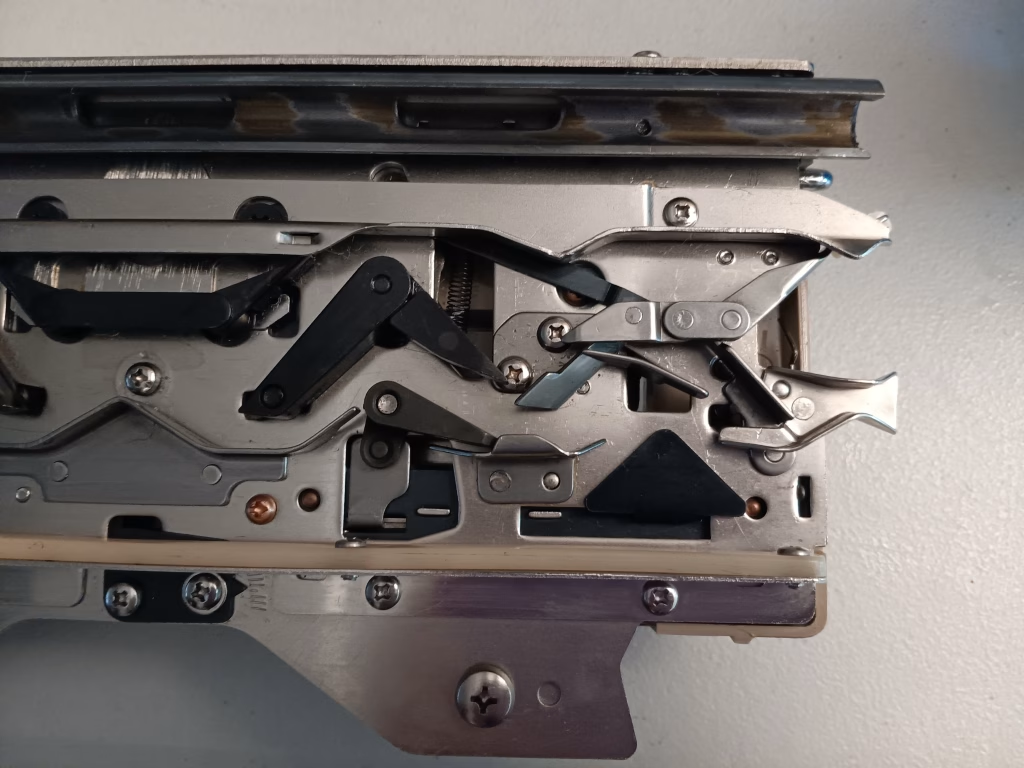
The retaining bar (plastic to plastic) is 100 cm long and 1 cm wide. The needles are similar to the needles used for Singer/Silver Reed/Studio ribbers. The picture below shows side by side comparison: a needle from Singer 888 is marked with one, while a standard ribber needle is marked with 2.
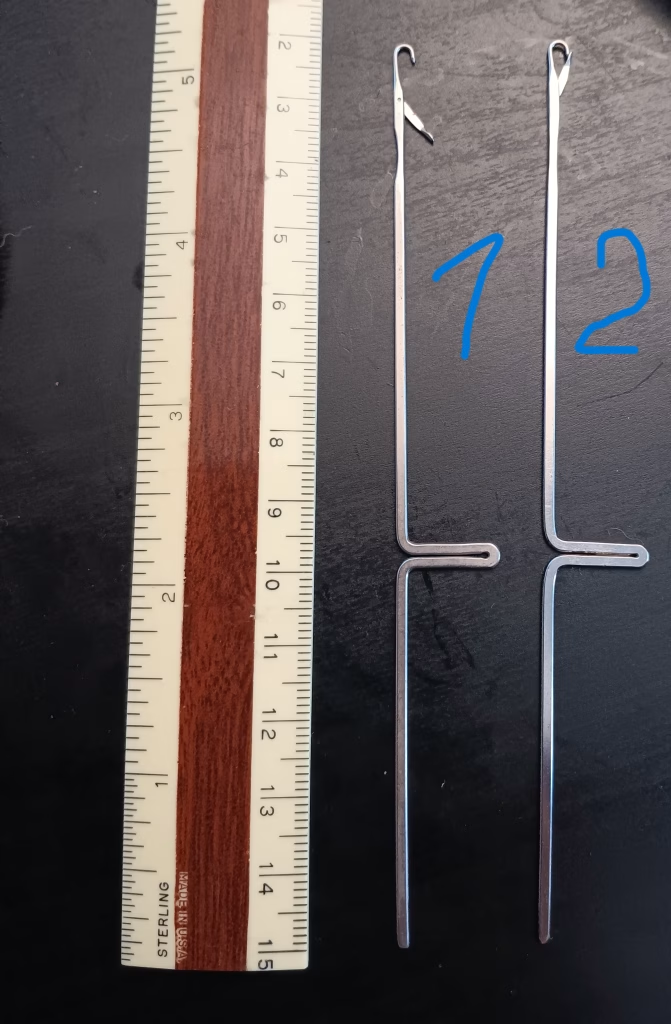
The one small difference though: the machine needle has an indent on the side opposite to the hook while the ribber needle has a slight indent (although it is a bit hard to see) on the same side of the needle as a hook. I will be testing soon if these needles are indeed compaible with the turn-knob Singer/Silver Reed/Studio machines.
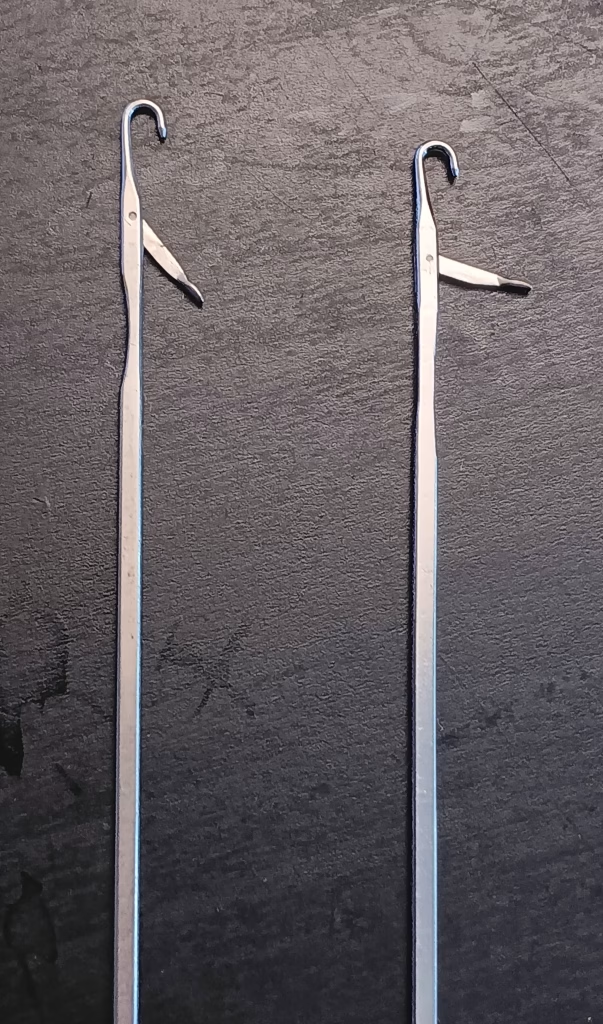
There are no end-rails/extension unlike slightly later models that have patterning drums and punchcard-reading capabilities.
The needle bed is very easiy to remove from the bottom panel of the case (for example, for clearning and oiling). The reason I mention it because punchcard models are somewhat harder to remove from the lower panel (there is A LOT OF unscrewing involved). It took me just several minutes to remove tha machine from its case completely, clean the insides and then put the lower case panel back on. I was not worried about misalligning anything, thanks for the genious enginiring simlicity of turn knob machines.
A lot of features of this machine bring nostalgic vitage feel: curved table clamps, slide-in round dial row counter, etc.
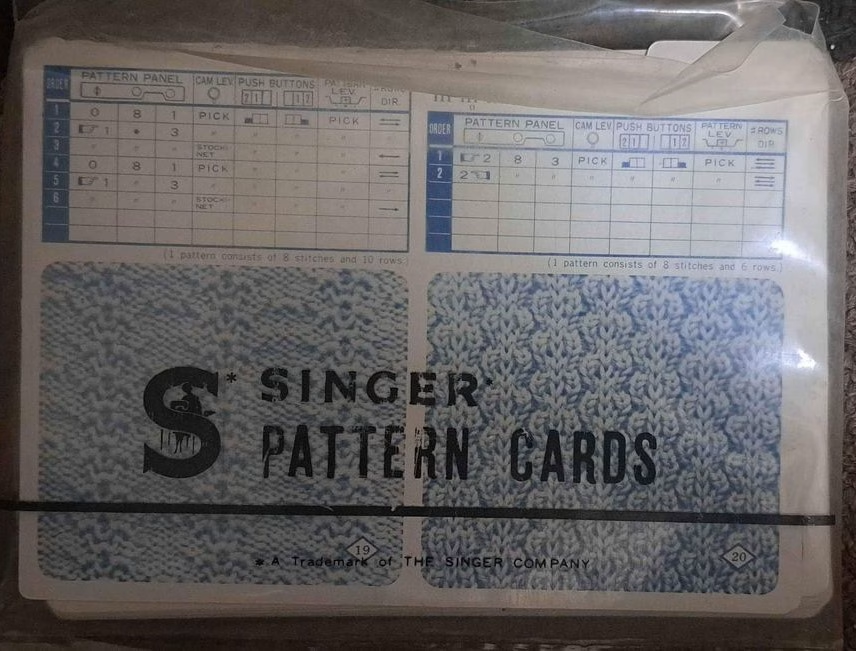
So far I’ve seen several color combination (although, more accurately, shades of the same color): dirty yellow, brown and dark cream.
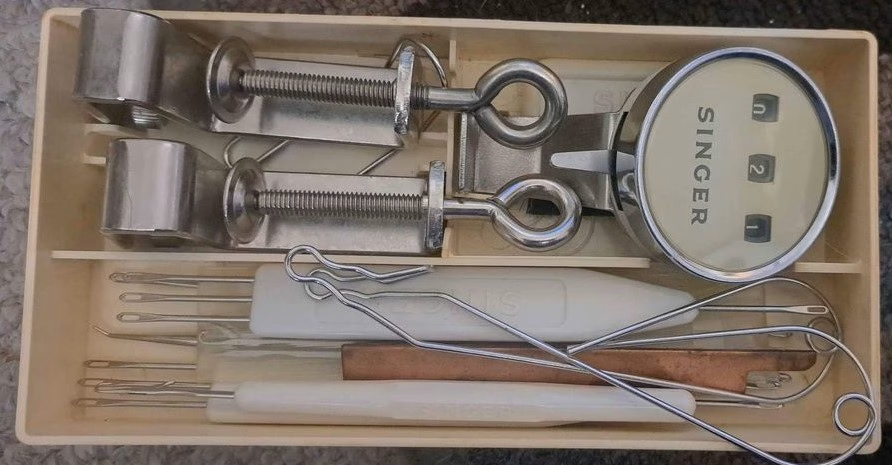
Watch a video of me trying various patterns on this machine. It took some getting used to it with the numerous knobs and buttons combinations but i quikly got a hang of it. The fair isle is somewhat different what all the machines I tested: you need to lay the yarn across the needles and then run the carriage over it (a little bit like wearing but not quite).
I feel that this machine will be excellent for those who are not ready yet to give up hand-knitting and a combination of some needle selection will give them nice fabric and yet maintain the feel of manual labor. This machine is also perfect for those who feel punch-card and electronic knitting machines to be somewhat intimidating.
Pros and cons of Singer 888:
PROS:
- light weight
- compact
- needles similar to the ribber (easy to find)
- easy to disassemble and remove from its case
- end caps are easy to remove from the needlebed and are attached to the main bed by metal hardware
- The carriage is very easy to remove from the needlebed if it is jammed
- manual and pattern cards are available online for free
- sturdy end caps, which also makes the machine (along with the narrower bed) lighter
- excellent for those who like the satisfaction of manual stitch manipulations
- excellent for beginners
- no ratchet tool is required to move the needles forward (like in Brother push-button machines)
- it is significantly faster to perform needle selection than manually and than the Brother pushbutton knitting machines (which involves the lever movement every time the needles need to be brought forward)
- needle selection pattern versus turn knob combinations is show on the front panel: no need to constantly refer to the manual
- ribbers were available to convert Singer 888 into a double-bed machine
CONS:
- bunch of knobs, buttons and levers might at first seem confusing
- vintage row counter if mispalced is hard to find
- somewhat limited patterning capabilities: manual needle selection is needed for complex patterns and patterns with more than 8 needle repetition
- colored fair isle requires manual yarn manipulation (the knitted will need to lay the yarn onto the needles with open latches; might seem tedious on larger projects but makes it easy to knit single motif patterns)
- limited number of add-ons: only ribber (no knit leaders, no color changers, no lace carriages, etc).
- replacement parts (row counter, sinker plate) might be hard to find if the machine came without them. Only some parts are interchangible with similar turn-knob models.
- despite being made out of a sturdy plastic, plastic end caps might still break if the machine is dropped (for example during shipment)
- to reinstall the end cap, the machine needs to be removed from the case (but it is easy and straightforward to do).

Similar turn-knob machines are Knitmaster ES-302, Knitmaster mod. 305, Riccar RK-601, Silver SK-301, Silver SK-302, Silver SK-303, Silver SK-305, Singer 666, Studio SK-301, and Studio SK-303. Despite similarity, not all/oarts features are interchangible. For example sinker plate for Singer 888 does not fit Singer 666 knitting machine (the slots on the sinker plate for the Singer 666 to attach to the carriage are positioned wider). Tension masts are interchangible (the slot to insert it is of the same diameter) but Singer 666 and Silver SK301 have masts capable of accomodating three different threads.
